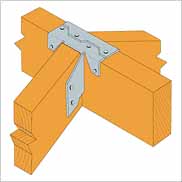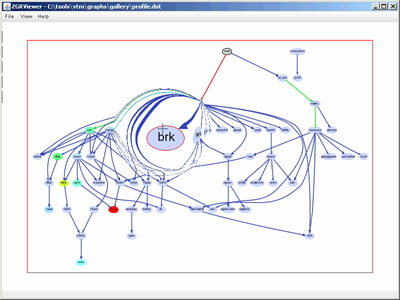
Wednesday, October 29, 2008
Prototype - If No One Sees It, Is It an Invention?
By LESLIE BERLIN
IN December, Johnny Chung Lee, then a Ph.D. candidate, posted a five-minute video on YouTube that became an Internet sensation.
The video showed how, in a few easy steps, the Nintendo Wii remote controller — or “Wiimote” — could transform a normal video screen into a virtual reality display, with graphics that seemed to pop through the screen and into the living room. So far, the video has been seen more than six million times.
That video, together with others that Mr. Lee, now 28, posted on YouTube, have drawn people to the innovator as well as his innovations. Video game companies have contacted him and, in September, M.I.T.’s Technology Review named him as one of its top innovators under 35.


When he completed his degree this year at the Human-Computer Interaction Institute of Carnegie Mellon, he received “lots of offers from all the big places,” according to Paul Dietz, who convinced Mr. Lee to join him in the applied sciences group of Microsoft’s entertainment and devices division. “When we told Bill Gates we were trying to recruit Johnny, he already knew about his work and was anxious to bring him to Microsoft,” adds Mr. Dietz, a research and development program manager.
Contrast this with what might have followed from other options Mr. Lee considered for communicating his ideas. He might have published a paper that only a few dozen specialists would have read. A talk at a conference would have brought a slightly larger audience. In either case, it would have taken months for his ideas to reach others.
Small wonder, then, that he maintains that posting to YouTube has been an essential part of his success as an inventor. “Sharing an idea the right way is just as important as doing the work itself,” he says. “If you create something but nobody knows, it’s as if it never happened.”
Before posting his own ideas, Mr. Lee watched other people’s videos about the Wiimote. An online community of electronics hobbyists share ideas in video form not only on YouTube, but also at sites like instructables.com and makezine.com.
Thirty years ago, pioneers of the personal computer industry swapped ideas and tried to outdo one another at meetings of the Homebrew Computer Club in an auditorium at Stanford. Today, these “meetings” happen virtually and globally, with people modifying, improving and otherwise riffing on one another’s ideas — then posting the results in video form. This wide-scale collaboration, Mr. Lee says, lets the hobbyists “take advantage of economies of scale of innovation.”
In late 2002, Mr. Lee started a small company to build and sell an invention that helps filmmakers minimize camera-shaking. He sells this “Poor Man’s Steadycam” for $39.95 online — commercial versions start at five times that price — though he encourages people to download free instructions from his Web site and to build the device themselves for $14 in parts.
Mr. Lee says that the company is profitable, with revenue of about $250,000 in its first five years, but he adds that he is not much of a businessman. He has been out of inventory for over a year.
The steadycam company is his only foray into business. His decision to share, rather than sell, most of his ideas is linked to his definition of success, which he measures in terms of impact, not dollars. This, he says, is a reason he chose to join Microsoft: the company’s enormous customer base represents “real potential to help other people.”
He chooses his personal projects based on what he calls their “work-to-wow” ratio. “I want to get the biggest wow for the smallest amount of work,” he explains, adding that for him, wow is synonymous with impact.
The ratio of the Wiimote projects was fantastic: each idea that has reached millions of people took only three to four days to conceive, build, film and post.
Mr. Lee encourages innovators to ask themselves, “Would providing 80 percent of the capability at 1 percent of the cost be valuable to someone?” If the answer is yes, he says, pay attention. Trading relatively little performance for substantial cost savings can generate what Mr. Lee calls “surprising and often powerful results both scientifically and socially.”
As evidence, he might point to a do-it-yourself interactive whiteboard, another of his Wiimote innovations. Interactive whiteboards, which in commercial form generally sell for more than $1,000, make it possible to control a computer by tapping, writing or drawing on an image of the desktop that has been projected onto a screen. Mr. Lee’s version can be built with roughly $60 in parts and free open-source software downloadable from his Web site.
Some 700,000 people, many of them teachers, have downloaded the software, Mr. Lee says. Much more expensive whiteboards may offer more features and better image resolution, but Mr. Lee’s version is adequate for most classroom applications.
It is also easy to build. An after-school Lego robotics club for fifth graders at Clara Byrd Baker Elementary School in Williamsburg, Va., built a Wiimote whiteboard in four one-hour sessions. “Once it was done, the kids were so excited,” recalls Kofi Merritt, then the school’s computer resource specialist, who suggested and advised the project. “They recognized themselves as innovators and demonstrated the whiteboard in classroom after classroom.”
MR. LEE’S ideas have acquired a momentum independent of Mr. Lee himself. At educational conferences, teachers have presented how-to tutorials for their colleagues. And at Microsoft, his appreciation for online video has rubbed off on others. The company recently gave Mr. Dietz permission to go public with a new invention of his own: a drinking glass that, when placed on the Microsoft Surface table — a table with an interactive, multitouch display built into the top — alerts a waiter to offer a refill.
After writing a paper on his invention, Mr. Dietz wanted to test the concept in the market. His first step? He posted a video on YouTube.
Leslie Berlin is project historian for the Silicon Valley Archives at Stanford. E-mail: prototype@nytimes.com
Tuesday, October 28, 2008
aspsms.com - Examples - XML - Python - SMS
"The following example in Python has been sent to us by a client which uses this script language to connect to our XML-gateway.
#!/usr/bin/python2
print 'Content-Type: text/html'
print # Blank line marking end of HTTP headers
import socket
HOST = 'xml1.aspsms.com' # The remote host
PORT = 5061 # The same port as used by the server
userkey = #please fill in your USERKEY
password = #please enter your PASSWORD
originator = #please fill in the ORIGINATOR
recipient = #please insert the RECIPIENT here
text = #Your SMS Text
CONTENT='''
'''+str(userkey)+'''
'''+str(password)+'''
'''+ str(originator) +'''
'''+ str(recipient) +'''
'''+ str(text) +'''
SendTextSMS
'''
length=len(CONTENT)
s = socket.socket(socket.AF_INET, socket.SOCK_STREAM)
s.connect((HOST, PORT))
s.send('POST /xmlsvr.asp HTTP/1.0\r\n')
s.send('Content-Type: text/xml\r\n')
s.send('Content-Length: '+str(length)+'\r\n\r\n')
s.send(CONTENT)
datarecv=s.recv(1024)
print 'Reply Received: '+ str(data"
birdeye - Google Code
This looks promising, and they're implementing (implemented?) a version of this:

claribole.net - ZGRViewer - Videos
Probing Lens
Monday, October 27, 2008
Wednesday, October 22, 2008
What Shortage of Scientists and Engineers? - TierneyLab Blog - NYTimes.com
This makes me mad,
but is it wrong?
...as long as American universities and laboratories keep attracting the world’s best talent, why should we worry about losing our technological edge?
Tuesday, October 21, 2008
Monday, October 20, 2008
Floating Fish: R/C Fin-Fish Blimp Hypnotically Swims Through the Air
Air Art from flip on Vimeo.
Much like Festo's Air Ray and Airjelly contraptions, this Fin-Fish R/C blimp floats so gracefully through the air that it is liable to hypnotize you at your office desk until quittin' time. There isn't any information on device, but it appears to be an entry in the annual Airship Regatta held in Germany. And, and like the Air Ray, it is probably built with a helium-filled balloon and servo-driven fins. [Thanks Beeker! ]
Thursday, October 16, 2008
Phlatprinter - Phlatboyz - Phlatprinter - From your imagination to the real world
Welcome to Phlatboyz.com -
Please visit the Phlat-Store for details and purchase options

This site was created to introduce you to the Phlatprinter. The Phlatprinter is a special type of CNC machine (Pat Pending) invented by Mark and Trish Carew. After years of trial and errors we believe we have a robust machine that anyone can build. Most of the materials can be purchased at your local hardware store at a cost effective price that allows anyone to become a kit builder of their own designs. Total estimated cost $600.
To find out more about the Phlatprinter go the About Us page.
Wednesday, October 15, 2008
Tuesday, October 14, 2008
Cool Tools: Strong-Ties
Strong-Ties

Strong-ties are heavy-duty metal brackets that fit standard lumber. They enable you to shortcut the complications of joints. You cut straight lumber to fit the bracket, then nail or screw it in. They come in close to a hundred shapes; you could build a very strong house using them. In fact they are increasingly used for earthquake- and hurricane-proof construction. If you don't mind the rough style of metal on wood, plenty of things can be built quickly using 2 x 4s. (Strong has plans on their website.) It's he-man K'NEX.
-- KK

I'm a handy-man sort of guy; I could have built my workbenches without using this product, but I'm very glad I didn't. Simpson Strong-ties let me do the task in 1/10th the time, using only straight cross-cuts and no fancy notching and bracing. The bench looks mighty attractive. It is likely more sturdy than an all-wood design -- which would have required careful measuring, complicated notches, and patience. The Strong-ties made it a breeze to get the job done well, which means I can now turn my attention to more important stuff, like renovating my bathroom.
I believe even a relatively *un*handyman would have success with these brackets. If you can wield a handsaw and cut a straight line, you can build benches, carts, tables, decks and more. Even if you have all the appropriate tools for building it without the Strong-ties, as I do, you'll find that in the end, Strong-ties are worth every penny just for the savings in time and labor.
I was doubtful when I bought them. Now I'm sold on them!
-- David Priest
Simpson Strong-ties
About $1- $6 each
Available from Ace Hardware among others
Tools: Fab Central Tools Index
-
 Design Tools:
Design Tools: - cad/cam
- 3D modeling
- 2D design/graphics
- programming
- schematics/PCBs
- web, siteserver, git (and how to edit this content)
-
 Circuits and Microcontrollers:
Circuits and Microcontrollers: - cable making
- parallel programming
- serial/USB programming
- input devices
- output devices
- networking and communications
- data sheets
-
 Molding and Casting:
Molding and Casting: - wax molding
- injection molding
- vacuum forming
-
 Basic Machines:
Basic Machines: - shop safety and rules
- Universal laser cutter
- vinyl cutter
- Modela minimill
-
 Advanced Machines:
Advanced Machines: - Omax waterjet cutter
- ShopBot router
- Excimer laser cutter
- Epilog laser cutter
- Alpha lathe
- APS pick and place
- Torchmate plasma cutting and routing
- Zeiss Confocal Microscope
-
 3D Printing and Scanning Machines:
3D Printing and Scanning Machines:
NCIIA 13th Annual Meeting
Sunday, October 12, 2008
Getting to Innovation, and Why Multi-Disciplinarity Helps
Friday, October 10, 2008
Collaboration: Group theory : Nature News
Published online 8 October 2008 | Nature 455, 720-723 (2008) | doi:10.1038/455720a
News Feature
Collaboration: Group theory
What makes a successful team? John Whitfield looks at research that uses massive online databases and network analysis to come up with some rules of thumb for productive collaborations....
 By mapping which authors collaborated with whom (lines) and when (colour of lines), Katy Börner and her colleagues show how networks extend with time and how the impact of both an author (thickness of nodes) and a partnership (thickness of lines) can grow. See animation.W. KE, L. VISVANATH & K. BÖRNER
By mapping which authors collaborated with whom (lines) and when (colour of lines), Katy Börner and her colleagues show how networks extend with time and how the impact of both an author (thickness of nodes) and a partnership (thickness of lines) can grow. See animation.W. KE, L. VISVANATH & K. BÖRNERThursday, October 09, 2008
Saturday, October 04, 2008
Wednesday, October 01, 2008
Transformer Furniture Goes Mainstream : TreeHugger
With more people living and working in smaller spaces, the market has grown as well, so that where a few years ago, designs like this were produced in small quantities and cost thousands, now you can pick them up at Crate and Barrel for five hundred bucks.

Of course, for that price it isn't necessarily going to be made of FSC certified wood by local craftspeople.

But when such designs become mainstream and the public accepts them, they become part of a downsizing trend, where people are living in smaller, more efficient spaces with less stuff cluttering them up. I hope. ::Crate and Barrel via ::Unpluggd
More Transformer Desks and Furniture on TreeHugger

CI Desk: Mini Transformer Laptop Workstation

Transformer Furniture: Work + Play Combo by Gruber + Schlager

Less is the New More: Mobelform Transformer Furniture


















